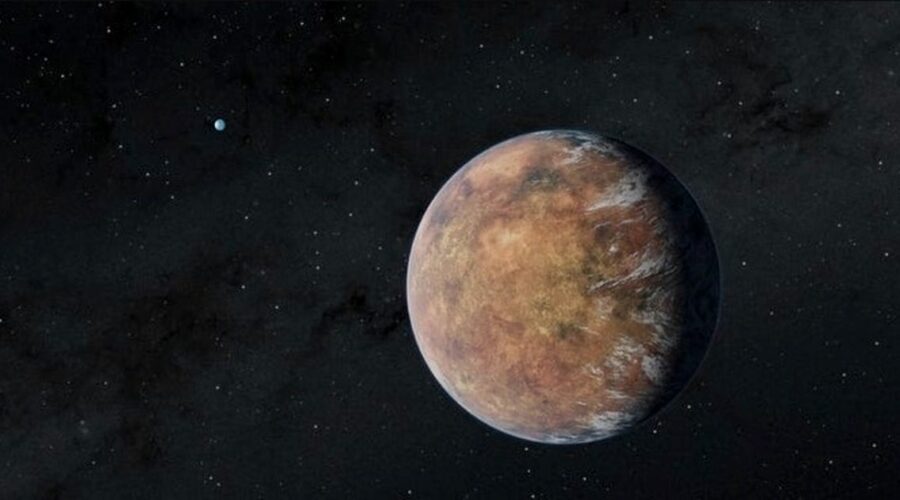Earth-sized planet found in ‘habitable zone’ that could one day host humans
Scientists have found an Earth-sized planet just 31 light years away from us that could be habitable due to its temperature and atmosphere.
Wolf 1069 B is only one of a handful of exoplanets, planets outside of our solar system, that are in what is known as a star’s habitable zone – the region around a star that allows planets to be temperate enough to allow life to thrive.
The newly discovered planet, which orbits a red dwarf star, is a relatively close 31 light years away from Earth in the Cygnus constellation.
READ MORE: NASA sending ship to asteroid worth 70,000 times more than the global economy
It also seems to have a significant atmosphere, potentially making it the starting point in the search for chemicals that would be indicators of life.
"When we analysed the data of the star Wolf 1069, we discovered a clear, low-amplitude signal of what appears to be a planet of roughly Earth mass," said Diana Kossakowski, lead author of the study into Wolf 1069 B, from the Max Planck Institute for Astronomy.
She said that the planet orbits its star every 15.6 days at a distance of one-fifteenth of the separation between Earth and the Sun.
The planet is the sixth closest planet to Earth’s mass that exists in a star’s habitable zone.
Wolf 1069 B’s existence was confirmed by a team of 50 astronomers after it was found by a telescope at the Calar Alto Observatory in Spain, as part of the CARMENES survey.
For the latest breaking news and stories from across the globe from the Daily Star, sign up for our newsletter by clicking here
Scientists use AI guide to find monster meteorite under ice in Antarctica
The CARMENES survey is a project that aims to scan 300 dwarf stars to look for Earth-like planets.
The survey has discovered around 20 exoplanets, some of which are considered to be the most habitable planets found by scientists.
So far, around 5000 exoplanets have been discovered since the 1990s, with only about a dozen of these being considered habitable.
The astronomers’ study was published in the Astronomy and Astrophysics journal at the end of last year.
READ NEXT:
- JCB house attacker who flipped car given suspended sentence after causing £28k of damage
- Millionaire financier who jumped to death from skyscraper bar was facing charges
- Unassuming tower dubbed 'Brick D*ck' is the 'most phallic building in the world'
Source: Read Full Article





